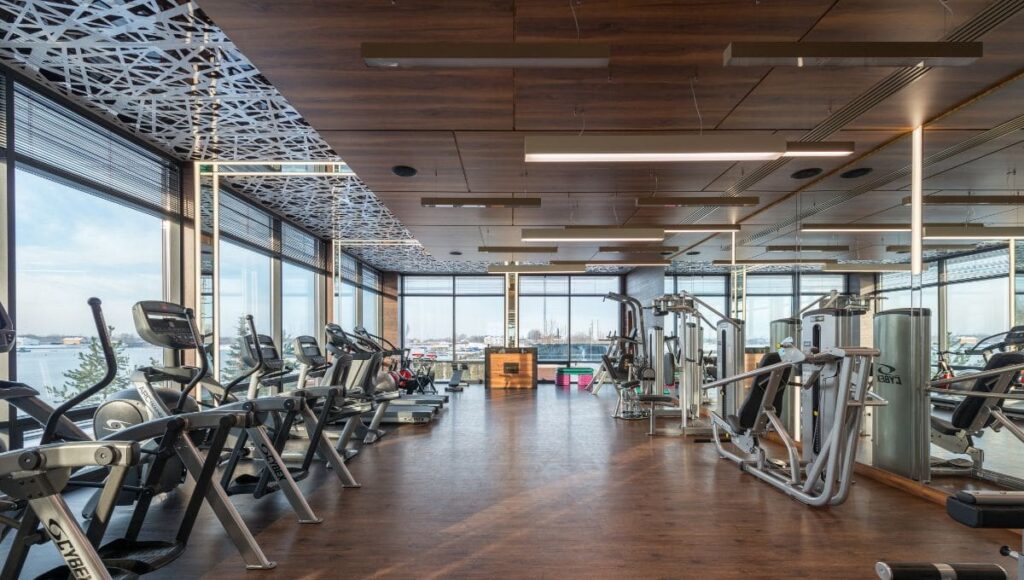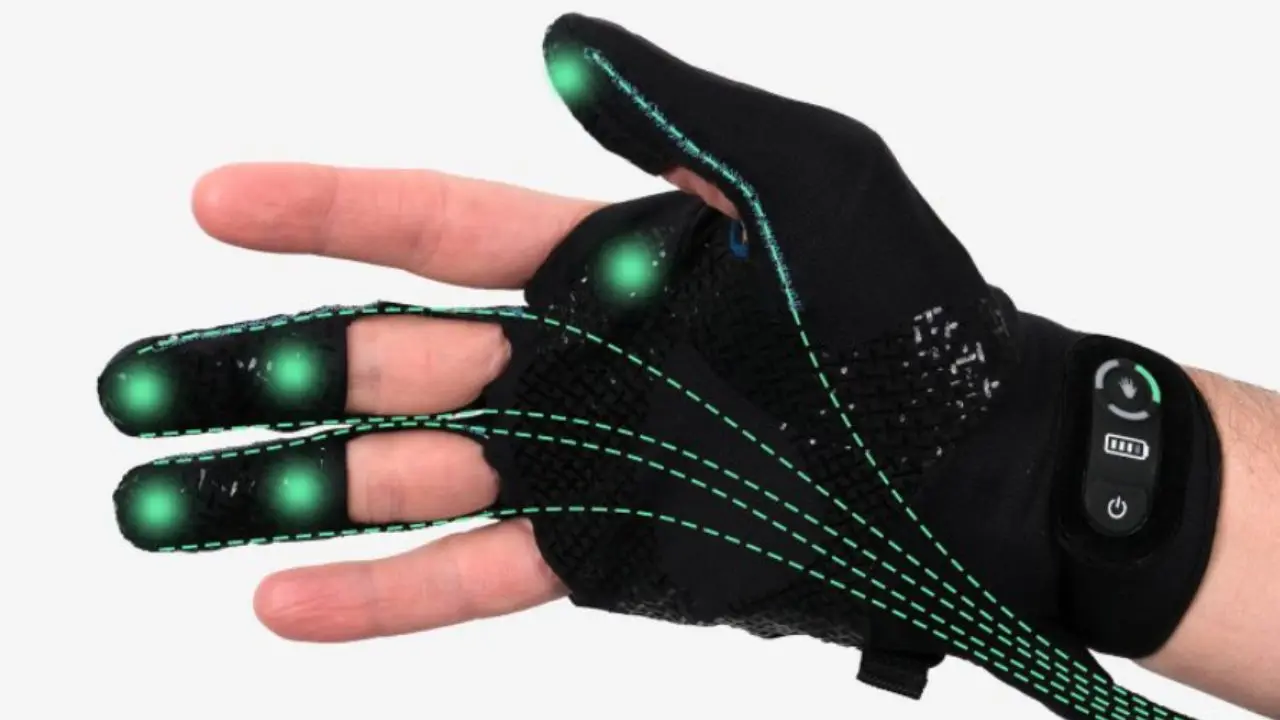Fitness
Kaley Cuoco eats every 2 hours otherwise she'll 'literally start to fall apart'

Mondays can be tough, but Kaley Cuoco tries her best to start the week off on the right foot.
“We really try to ramp it up on Mondays,” her trainer Ryan Sorensen previously told Shape, adding that she has a “never miss a Monday,” attitude.
Cuoco has always lived an active lifestyle, but the 38-year-old has become more dedicated to her fitness routine as she’s gotten older.
“Bottom line is, you know, I’m not 21 anymore,” she previously told Women’s Health. “It used to be so easy, I didn’t have to do as much. Now, (working out is) part of my day.”
Like all of us, the actor has days where she’s not feeling motivated. In those moments, she reminds herself that “it’s just an hour of my day.”
“And you never leave a workout and go, ‘I wish I didn’t do that.’ Even if it wasn’t the workout you envisioned, even if it it was a little bit more low-key. Getting a good sweat sets the whole tone for the day,” she previously told TODAY.com.
Staying active is a priority for Cuoco, and Sorensen says his client typically gets around 10,000 steps in each day.
“She always tries to do some sort of physical activity, whether it’s with me, whether it’s with yoga or riding horses,” he told E! News.
Wondering what workouts Cuoco loves best? Curious about the foods she eats to stay in shape? Here’s everything she’s said about her fitness routine and diet.
She’s a proud yogi
Cuoco called yoga “the secret” to her toned physique in 2016 while chatting with ET.
“Yoga is the reason that I have been (looking great). It has done everything, mentally and physically. I love it,” she said.
The star is particularly fond of hot yoga, as she told Women’s Health. Despite her dedication to fitness, she admitted that she also feels like skipping her workouts on occasion.
“Sometimes do I want to get up in the morning and do it?” she said. “No. But when I get out, I feel like a million bucks.”
She stays loyal to her favorite workouts
Keeping a number of workouts in your fitness arsenal can keep your body on its toes, and Cuoco isn’t afraid to try new exercises. However, she tends to stay loyal to her go-to workouts.
“If I get a little bit bored, I’ll switch over to SoulCycle, which I love too,” she previously told Women’s Health. “It’s all or nothing. I’m hot or cold. I’m not a gray area. So if I’m doing yoga, we’re doing it every day this week….Then I’m like, ‘Oh my god, I have to switch.’”
She knows what workouts don’t work for her
Running isn’t for Cuoco, and she’s unapologetic about that.
“I tried spinning, I tried running, I tried yoga, I tried Pilates,” she previously told Women’s Health. “I realized I don’t like running…I refuse to do it. I like spinning, so I try to mix that in.”
She tweaks her workouts based on the type of acting role she’s pursuing
When she was prepping for Season Two of “The Flight Attendant,” Cuoco stepped up her workout game.
“Her training regimen consisted of high-intensity circuit full-body training, like cardio, strength training, and lots of core twice a week,” Sorensen told Shape. “Hot yoga once a week, and a couple of days a week she would ride (cycling), which is a beast of a workout.”
While training for an action role in 2022, the actor worked out with her trainer six days a week.
“My job is to always be in communication with her, keep her motivated with result-driven targets, and always listen to her body to make sure we are doing what her body can handle at any given point,” he said.
She eats every two hours
Cuoco fends off the hangry horrors by eating every few hours.
“I learned over the past few years that I have to eat every two hours,” she previously told Women’s Health. “I just do, and I’m not talking about giant meals, but I literally start to fall apart, especially when I’m shooting…there has to be at least a snack or something that I’m eating because I just lose energy so quickly.”
Noting that she used to be “afraid to eat,” Cuoco explained that she now knows “the right things to eat.”
“I’m much healthier now than I used to be. And I feel better than I ever have, but I also probably eat more than I ever have, which is interesting,” she said. “I’m actually eating smaller meals and drinking more water and less alcohol.”
She tries to incorporate fun into her workouts
During their full-body workouts, Cuoco and Sorensen do a mix of resistance training plus conditioning and stability work. The personal trainer told E! News his client enjoys using a stability ball but isn’t a fan of the VersaClimber machine.
To keep Cuoco motivated, Sorensen likes to infuse a bit of fun into her workouts.
“We just kind of get creative with balancing on the ball on our knees and doing a dumbbell press, or doing some plyometrics on the box or some med ball slams and ball throws,” he said. “Just really keeping her interested and just about having fun because, obviously, working out isn’t always the most fun, but we seem to have a good time.”
She avoids mindless eating
It’s tempting to turn on the TV and open a bag of chips at the end of a long day, but Cuoco has learned that this form of multitasking isn’t for her.
“I no longer watch TV while I eat. I think that’s a big distraction ‘cause you’re not thinking about what’s going on…so it’s just being very mindful,” she told Women’s Health.
While chatting with Shape, the star also said she consciously changed her diet after marrying her ex-husband professional tennis player Ryan Sweeting.
“We got into this habit we called the bedtime snack. The drawers next to the bed were filled with candy. Eventually, I realized it was mindless eating,” she said, per Us Weekly. “I was just doing it because he was doing it, and it was adding hundreds of calories I didn’t even think about. So I cut that out.”
She committed to HIIT treadmill workouts postpartum
After giving birth to her daughter Matilda, Cuoco turned to an intense 25-minute treadmill workout to get back into the swing of her fitness routine.
“Putting that incline up is so good for your muscles, and for your circulation,” she previously told TODAY.com. “I’ll also walk backward, which is amazing for your butt and legs. It pretty much works everything.”
Cuoco’s HIIT interval routine featured 10 one-minute rounds with 30 seconds of work and 30 seconds of rest. At the beginning of the workout, the star started at a 1% incline and 6.4 speed. With each round, she increased the intensity by 1% for the inline and 0.2 for the speed.
She tried a hands-free workout after developing Carpal tunnel syndrome
Who knew holding a baby too much could lead to Carpal tunnel syndrome? As Cuoco explained in a video posted to Sorensen’s Instagram channel, that’s exactly what happened to her following the birth of her baby girl.
As a result, the duo shifted gears to focus more on lower body and core workouts to give the new mom time to heal. In the video, Cuoco tackles a range of moves, including step exercises, and incorporates resistance bands and an exercise ball.
She allows herself one cheat day a week
Life is all about balance, and Cuoco lets loose with her diet once in a while.
“I have to have a cheat day,” she told Shape, per Us Weekly. “I know when I’m being good all week long that come Sunday, I’m going to lie by the pool, have a drink, and eat some pizza. Then I wake up on Monday morning and I’m all ready to start the week again. I’m just going to be in a bad mood all the time if there’s no light at the end of the tunnel.”
She has a balanced, consistent diet
Cuoco told Women’s Health she typically starts her morning with peanut butter on toast, followed by something light for lunch, like half of a sandwich or tuna on a salad or in a wrap.
For snacks, Cuoco said she likes to nosh on Luna Bars, a rice cake, pears, an apple with peanut butter and smoothies
“I love a smoothie,” she said. “I think it’s a great way to get a nice meal in there, and it’s quite easy.”
At dinnertime, the star usually opts for something healthy like fish and veggies.

Fitness
‘Very distressing’: 24-hour gym policy in spotlight after bodybuilder collapses in shower
The family of a Perth bodybuilder who spent 15 hours unconscious in a gym shower without anyone noticing is calling for greater safety measures at gyms.
Police were forced to break down a door of the gym’s bathroom to rescue Giuliano Pirone, 33, who was found lying in the shower cubicle with the water still running about 10:30pm last Tuesday.
He had been in the shower since 7am without any of the gym’s staff or customers realising he was there.
“My beautiful son was alone on that floor, collapsed, smashed his head for about 15 hours and no-one noticed anything,” his mother Daniela Pirone told Nadia Mitsopoulos on ABC Radio Perth earlier this week.
“The showers are 20 metres away from reception and no-one noticed anything. Don’t the showers get cleaned? I’m just dumbfounded.”
24-hour gyms ‘convenient and affordable’
Barrie Elvish, chief executive of AusActive, the peak body for the exercise and active health sector, said what happened to Mr Pirone was “very distressing”.
“I sincerely hope that this gentleman does make a full recovery,” he said.
He said AusActive did encourage its member gyms to sign up to a voluntary code of practice, which includes measures to try to keep gym-goers safe.
“That includes a proper induction process for new members to any gym, which takes them around how to use equipment safely obviously, but also where duress alarms may be, where a defibrillator may be and so on,” he said.
Mr Elvish said 24-hour, mostly unstaffed gyms were a popular option with gym users because they allowed members to go anytime that suited them, without the cost that applied if a gym was staffed full-time.
“Eight million Australians have gym memberships, and 24-7 gyms are a very convenient facility for the majority of those people that go to a gym,” he said.
“It means they can go at their time of choosing and when it suits them to do that. But they aren’t staffed by definition and it’s not possible to staff a gym fully 24 hours a day, 7 days a week.
“The cost of doing that would put the cost of gym membership beyond many Australians’ ability to pay.”
He said checking bathrooms was also a fraught question, as CCTV would not be appropriate and a staff member going in to check a shower area wouldn’t necessarily know how long a customer had been in there.
“If I was to go into a bathroom to restock supplies and there was someone in the shower, unless I was in that bathroom for 15 minutes or so doing the restocking, I may not think it’s unusual for a person to be in the shower for 15 minutes,” he said.
Giuliano Pirone’s family have also questioned why nobody noticed that he checked into the gym but never left, but Mr Elvish said it was not usual practice for gyms to check patrons out.
“That’s something we could possibly look at, but at the moment, I’m not aware of any gym that actually has a check-out as well as a check-in,” he said.
In a statement, the gym’s management staff offered their “deepest sympathies to Giuliano’s family during this difficult time”.
“As a 24-hour gym facility, we remain committed to maintaining a safe, secure and accessible environment for all our members.”
Waivers and responsibilities
Beth Rolton, a specialist personal injury lawyer, said while gyms were unregulated, they were still subject to state workplace health and safety legislation.
“The Workplace Health and Safety Act of WA 2020 is the act that imposes a primary duty of care on businesses and that primary duty of care is to ensure it’s reasonably practicable that the health and safety of persons are not put at risk when they are attending that business, so there’s a general broad duty that applies, Ms Rolton said.
She said while businesses like gyms often asked customers to sign waivers around responsibility for death and injury, they could only go so far.
“If you’ve got an activity that does involve a significant degree of physical exertion, businesses can apply a waiver when you sign up,” she said.
“I think it’d be very uncommon if you did join a gym if you didn’t sign some kind of waiver to say that you know if you have some kind of injury or death that the gym is not going to be responsible for that.
“Those waivers can really only go so far, if there’s reckless conduct then that waiver is voided or if there’s negligent conduct then the waivers can be voided.”
Ms Rolton said it was up to gym operators to look at what risks their customers may be exposed to, and what could be done to prevent them.
“What gyms have to do is look at what’s foreseeable and what’s a reasonable response to that?” she said.
“There are all sorts of foreseeable things that could happen in a gym and I guess one of those is having a medical episode.
“So then what the gym has to do is go, ‘What are some reasonable responses to those foreseeable risks that we can implement?’”
“There’s no obligation to eliminate all risk from a gym because that’s just not practicable, but there has to be some reasonable response to what is foreseeable, and so that’s going to be a case-by-case situation.”
Fitness
Measuring bioactive nitric oxide during exercise could help improve fitness, and this new device provides real-time data

The heart is the master dispatcher for our lifeblood. It has the crucial burden of balancing physiological economics during rest, during a ride, and while recovering. If the heart can’t pump enough blood to equal demand for nutrients and oxygen, fatigue sets in, you bonk, and sometimes, you have to quit. Rest and replenishment are the only salvation.
It is well understood that the body’s managerial mechanisms run much deeper, especially during exercise. Governing a cyclist’s overall ability to continue putting out power during any type of effort are the cellular and molecular constituents produced and delivered alongside every contraction of the restless courier in our chest. Oxygen, glucose, fatty acids, lactate, hemoglobin, bicarbonate, nitric oxide — all are important, each playing a role in how well we are able to respond to the stresses of exercise. They also dictate how well the body can adapt and repair between exercise sessions.
We make an intentional point to try and measure and understand the importance of biomarkers and vitals in athletic training and performance, with the current boom in wearable technologies making it possible to deliver insights never previously fathomed. Though no lack of data exists, is there a best measure to understanding an athlete’s exercise capacity and fitness?
Being able to measure blood flow has been a decades-long quest in sports medicine. Exercise physiologists often focus on the mitochondria, bioenergetics, and oxygen consumption (VO2) as a pathway to understanding someone’s performance capacity and upper limits. Coaches use biological outputs such as lactate and heart rate layered atop metrics like power to guide training strategy. The integration of all of these somatic informatics is rightfully based on what we know as best practice today.
But what are the true regulators and rate limiters of performance? We know that the ability to do work (ride a bike) is based on a few basic orderly factors:
- Muscles need oxygen
- and fuel (glucose, fatty acids)
- to synthesize ATP
- which is used to output mechanical energy
- so that they can contract
- and work (exercise) can be done.
But a crucial step is missing: the regulation of delivering oxygen and fuel. The body was divinely designed to compensate and adapt to changing conditions, and at the level of muscle oxygenation and work output, here is how that concept is applied. At the onset of exercise, a shift in blood flow must occur to ensure oxygen and nutrients are delivered where they are needed most — your working skeletal muscles, the heart, and brain, primarily. The ability to measure and understand how this happens is crucial. As it turns out, one molecule is inadvertently responsible, and without it, everything else is impossible.
Hello, SNO.
Performance regulation: There’s a new kid in town.
Nitric oxide (NO) has been hailed as one of the most important regulators of cardiovascular health, impacting blood pressure, inflammation, and overall vascular function. It is a potent vasodilator, responsible for directing and improving blood flow to areas of the body where blood flow is needed most. This happens during periods of oxygen demand and supply mismatch, like exercise, and it happens almost immediately. The supplement market is booming with products that help athletes improve NO production, such as L-arginine, to help maximize blood flow to muscles during a workout.
All of this stated, the classic understanding of how NO is produced and directs blood flow is beginning to change, which inevitably impacts how we think of performance regulation. Let’s break it down. We know that:
- Muscles need oxygen,
- and oxygen is carried by hemoglobin in red blood cells.
- Oxygen must be transferred from red blood cells to muscles
- so work (exercise) can be done.
Further:
- When exercise starts,
- muscles begin consuming oxygen at a higher rate.
- A dip in available oxygen happens.
- Oxygen is increasingly offloaded from red blood cells to try and match the new demand.
Remember: supply must match demand.
Now what? An economic dance ensues between red blood cells (where oxygen is carried), and the oxygen tension in the muscle itself. A newer discovery has explained how this interplay impacts overall dispersion of blood during a workout so muscles can be adequately fueled and exercise can continue, and it is meticulously regulated.
During conditions where oxygen tension in muscles (and therefore red blood cells) decreases, a nitric oxide derivative called S-nitrosohemoglobin (SNO-Hb) is also produced and offloaded by hemoglobin alongside oxygen. SNO-Hb, part of a group of compounds called S-nitrosothiols, or SNOs, dilates the tiny blood vessels in the muscle tissue itself (capillaries, arterioles). Blood flow increases, and oxygen delivery can now meet the heightened demand. This goes for nutrient delivery too, like increased need for fatty acids and glucose.
Why is measuring SNO helpful?
It could be hypothesized that many of the foundational benefits of exercise are due to these well-controlled increases in blood flow. There is a system-wide effect on the heart and brain, too. Further, there are adaptations to the cardiovascular system and blood profile in response to training. More exercise leads to more hemoglobin, a larger blood volume, and a greater and faster NO response. The latter specifically leads to a better blood flow response, and therefore improved oxygen and nutrient delivery. Theoretically, the same goes for bioactive NO derivative, SNO, at the tissue level. In this perspective, SNO is sitting in the driver’s seat and orchestrating it all.
Devices exist on the market today that measure oxygen saturation in muscles and other tissues (SmO2 or tissue oximeters), but that only paints a partial picture of the impact certain types and intensities of exercise have on an individual. Being able to measure someone’s SNO response to exercise would offer the first look into the gatekeeper of muscle oxygenation. Why do we care? All of this impacts the ability for mitochondria to output adenosine triphosphate (ATP). It is also an indicator of muscular damage during injury and nourishment during rehabilitation. These processes all require oxygen.
Measuring SNO is specific, and it may indicate the readiness and effectiveness of exercise on a personalized level. It can be associative to overall VO2, and oxygen consumption specific to the muscle (called mVO2) as well. It may be an indicator of power output and capacity, and could also correlate to lactate efflux. Further, and most importantly, it can stand alone as its own measurement. As with anything truly new and disruptive, a lot of research needs to be conducted, but there is evidence indicating the usefulness of SNO as a novel biomarker to gauge fitness and performance.


How can we measure SNO? NNOXX has a device
There is a device available today that non-invasively measures SNO, plus muscle oxygenation (SmO2) and muscle oxygen consumption (mVO2) from a company called NNOXX. (Full disclosure: I have consulted with NNOXX on clinical and regulatory affairs.) It’s the only device of its kind, delivering continuously streaming data that can be accessed at any point during a ride or workout. NNOXX helps athletes understand the efficiency and effectiveness of an exercise by measuring these performance indicators directly in exercising muscle, in real time.
One differentiating thing about these biomarkers is that they are exercise “blind,” meaning you can ride or you can lift, and you will still produce SNO and use oxygen, just not in the same way (a topic for a different article). The $299 NNOXX device can be used to make individualized assessments during many types of exercise — biking, lifting, and running, as examples — and only needs to be placed on the exercising muscle during your workout.
So how can riders use NNOXX to help improve their cycling performance?

NNOXX provides a Performance Readiness Score
Muscle recovery can be impacted by insufficient calories, poor sleep, dehydration, overreaching, or even the onset of illness. NNOXX is differentiated because the biological assessments are measured and delivered in real-time based on rates of oxygenation and deoxygenation, plus the bioactive nitric oxide response while you’re exercising. All you have to do is a guided four-minute cycling protocol and the app will give you both a Muscle Readiness and Aerobic Readiness percentage tailored to your physiological status. You’ll be given a recommendation of how to proceed based on your score. You can also see a seven-day trend.
NNOXX can help you understand how well you performed compared to other rides or exercise sessions.
The app provides individualized performance indicators, including a Power Index, Endurance Index, and Economy. These indicators are based on your personal rates of muscle deoxygenation, reoxygenation and other factors, measured in real-time during your workout. After your workout is finished, you’ll receive your score for the day, your average range, and 60-day comparative trend.
This feature is really useful if riders have regular routes or workouts, and they’re interested in seeing if they’re improving, especially when making changes to their routine (e.g. more sleep, additional interval sessions, changes in recovery or dietary habits, or longer rides).
Further, users can potentially infer if a specific type of riding is best for them. For example, if the data shows you’re more efficient at climbing than previously thought, it may be something worth capitalizing on or integrating more often into your routine. The opposite can be a takeaway, too. If the app indicates you perform better doing power activities than long rides, you can use this to create a goal around improving your endurance.
What if I am new to mountain biking or cross-training and to improve my performance without hiring a coach or personal trainer?
The NNOXX app provides an AI-guided coach to customize your ride or other workout to be the most effective and efficient. The output is based on the effects of your real-time SNO production. As data is aggregated, workouts can be compared and personalized to your individual physical performance to help maximize gains.
For a new-to-market device and a new biomarker, the metrics provided by the device do seem to be physiologically reliable and accurate. Because the data is provided continuously with relatively no lag, the information can easily be compared to other performance indicators. Users can see how their body is compensating for increases in cadence or terrain grade, as examples.
NNOXX recently released a feature that allows users to import their Strava and Peloton data into the High Performance Platform on their website. Comparisons between SNO and SmO2 can be made alongside work, power, heart rate, and others on a single platform.
Again, the SNO biomarker and associated performance indicators are new. Like most things in science and medicine, it takes time to build up a bank of clinical evidence that is trustworthy, and the data on SNO as a performance biometric promises to evolve as discoveries are made and information is added. The digital technology boom is allowing researchers and developers to change the landscape at an unmatched speed, and NNOXX is a great example of what I believe is a positive outcome of the race.
Sources
Premont, R. T., Reynolds, J. D., Zhang, R., & Stamler, J. S. (2020). Role of nitric oxide carried by hemoglobin in cardiovascular physiology: developments on a three-gas respiratory cycle. Circulation research, 126(1), 129-158.
Reynolds, J. D., Posina, K., Zhu, L., Jenkins, T., Matto, F., Hausladen, A., … & Stamler, J. S. (2023). Control of tissue oxygenation by S-nitrosohemoglobin in human subjects. Proceedings of the National Academy of Sciences, 120(9), e2220769120.
Fitness
Exercise Scientist Critiques 1980s Fitness Trends | BOXROX

The 1980s were an era of groundbreaking fitness enthusiasm. People were ecstatic about new ways to get in shape, but not every trend stood the test of time. From flashy gym commercials to peculiar home workout equipment, the decade brought with it an abundance of both beneficial and questionable fitness practices. Dr. Mike Israetel, an exercise scientist and longtime professor, reminisces about the highs and lows of 1980s fitness with a humorous, critical eye. Whether discussing questionable fitness tech or odd spa routines, his insights reveal how far fitness has come and what can be learned from this unforgettable period.
Dr Mike Israetel, PhD in Sport Physiology and co-founder of Renaissance Periodization, is a well-respected professor in the bodybuilding community. He doesn’t only talk about workouts and fitness tips, he often dives deep into health and nutrition.
The fitness landscape of the 80s was littered with peculiar commercials promoting high-end gym facilities. These ads often made working out seem like the next frontier, as if stepping into a futuristic spaceship rather than a gym. The trend of circuit training in gyms was sold as revolutionary, though today it’s a staple in most fitness centers. Not to mention the emergence of hybrid equipment, designed to deliver full-body workouts but often causing more harm than good. While some of the training concepts were on point, others, as Dr. Mike points out, were downright risky and gimmicky.
In this article, we delve into the highs and lows of 1980s fitness trends, through the lens of modern exercise science. We critique not only the effectiveness of the workouts but also their lasting impact on fitness culture today. Through this analysis, we hope to understand which aspects of 80s fitness should remain in the past and which are still relevant today.
Related: The Biggest Mistakes Made By Personal Trainers
The 1980s Fitness Boom: A Cultural Phenomenon
Fitness in the 1980s was an exciting new frontier for many. Exercise and gym memberships became widely popular, largely due to a combination of media influence and the emergence of corporate fitness centres. High-tech gyms were marketed as must-have memberships, and fitness became synonymous with being fashionable and trendy.
Commercials for gyms like the “Bally Matrix Fitness Center” sold the idea of sleek, futuristic workouts with promises of sculpting perfect bodies. These gyms had everything from running tracks to swimming pools, which for the time, seemed cutting-edge. However, as Dr. Mike humorously points out, these advertisements often took themselves a little too seriously, presenting suburban gym facilities as high-tech health clubs straight out of a science fiction movie. What was particularly interesting about these commercials was their heavy focus on serious weightlifting alongside cardiovascular training—something that remains a staple in modern fitness programs.
 Source: Max Vakhtbovych on Pexels
Source: Max Vakhtbovych on Pexels
The Rise of Home Workout Equipment: Innovation or Hazard?
With the surge in fitness enthusiasm, home workout equipment started to explode in popularity. This is where things started to take a dangerous turn. Many people were ill-equipped to use these new devices correctly, leading to a spike in workout-related injuries. Dr. Mike explains that while lifting weights can be incredibly beneficial for health and longevity, improper use of exercise equipment, especially at home, can be deadly. The lack of instruction and improper set-up of home gyms often resulted in severe injuries—some fatal.
The Only 8 Bodyweight Exercises You Need to Build Muscle Fast
As he mentions, one of the most common causes of death related to lifting involved home bench presses where individuals would staple their necks with the barbell. With no spotter or safety mechanism in place, tragedies ensued. Despite the perceived convenience of home workouts, without proper safety precautions and guidance, home equipment posed significant risks.
The Jane Fonda Influence: A Step in the Right Direction?
No discussion of 80s fitness is complete without mentioning Jane Fonda and her revolutionary home workout videos. Fonda’s workout tapes became cultural icons, and her emphasis on aerobic fitness was a major influence on the exercise trends of the time. She encouraged cardiovascular exercise and body sculpting, two aspects of fitness that remain important today.
While Dr. Mike acknowledges the value of Fonda’s focus on technique, such as proper form during dumbbell exercises, he also critiques the light weights and repetitive movements as insufficient for anyone serious about building strength. The aerobic fitness revolution spearheaded by Fonda encouraged millions to work out, but as Dr. Mike suggests, the workout routines were often more geared toward getting people off the couch rather than building a truly functional and strong physique.
When to Switch Exercises for Maximum Muscle Growth
Exercise Machines and Gadgets: Where Did They Go Wrong?
A peculiar aspect of 1980s fitness was the prevalence of specialized machines that promised to target specific muscle groups. One of the most common sights in 80s gyms was the leg extension machine. While such machines were popular, they often focused on isolating muscles at the expense of overall functional movement. Dr. Mike advocates for compound exercises that engage multiple muscle groups simultaneously, such as squats or deadlifts, over single-joint isolation exercises.

By contrast, the technology used in fitness equipment back then was often gimmicky, trying to sell a “quick fix” rather than a sustainable fitness program. For example, the Smith machine, which was touted as a safer option for squats and bench presses, often created more problems than it solved. As Dr. Mike explains, the Smith machine locks you into a single plane of motion, which can lead to poor movement patterns and injuries if not used properly.
Dangerous Spa Routines: More Than Just Relaxation
The wellness spa trend of the 1980s took fitness to new levels of exclusivity and expense. Some spas charged exorbitant fees for clients to be subjected to extreme diets and caloric restrictions that would now be considered unethical and even dangerous. One notable example highlighted by Dr. Mike is the infamous “Golden Door” spa, where guests were fed a meager 700 calories per day—barely enough to sustain basic bodily functions, let alone fuel an active lifestyle.
The extreme diets and routines offered by these high-end spas were less about health and more about catering to an aesthetic ideal. Dr. Mike humorously compares the $10,000 spa fees (adjusted for inflation) to modern-day cults, where participants were stripped of their individuality and forced into restrictive regimes under the guise of achieving inner tranquility.
Exercise Scientist Critiques 1980s Fitness Trends
Fitness in the 2020s: What Have We Learned?
The 1980s may have been an exciting time for fitness enthusiasts, but it also serves as a reminder of the importance of balance, science, and safety in exercise. Today, the lessons learned from the excesses and errors of 80s fitness have shaped more effective, sustainable approaches to working out. Compound movements, proper technique, and a focus on overall functional fitness have become the gold standards of training.
While the flashy outfits and enthusiasm for exercise should be celebrated, the poorly constructed machines, dangerous fad diets, and unsafe home equipment are better left in the past. Dr. Mike’s humorous yet insightful critique serves as a reminder that fitness is a lifelong journey, and the best practices are rooted in science, safety, and sustainability.
Key Takeaways
| Key Aspect | 80s Fitness Trend | Modern Perspective |
|---|---|---|
| Gym Commercials | Serious, futuristic tone | Lighthearted, realistic fitness marketing |
| Home Workout Equipment | High injury risk due to improper use | Safer, well-designed equipment with better guidance |
| Jane Fonda’s Workouts | Focus on aerobic fitness, light weights | Cardiovascular fitness still important, but strength training necessary |
| Exercise Machines | Isolated muscle movements | Preference for compound exercises, functional fitness |
| Spa Diets | Extremely low-calorie, restrictive diets | Balanced nutrition focused on health and performance |
Was this article helpful?
-

 Technology6 days ago
Technology6 days agoBreakthrough robo-glove gives you superhuman grip
-

 Connecticut5 days ago
Connecticut5 days agoOxford church provides sanctuary during Sunday's damaging storm
-

 News1 week ago
News1 week agoVideo: Biden Delivers Keynote on First Night of D.N.C.
-

 News1 week ago
News1 week agoVideo: Protesters Clash With Police Near the Democratic National Convention
-

 News1 week ago
News1 week agoEx-officer convicted in George Floyd's killing is moved to new prison
-

 Politics1 week ago
Politics1 week agoFormer teacher reveals which students suffered 'the most' under Walz's pandemic-era guidelines
-

 News1 week ago
News1 week agoVideo: D.N.C. Holds Enthusiastic Roll Call to Nominate Harris
-

 World1 week ago
World1 week agoPanama deports 29 Colombian migrants from Darien Gap under US deal














